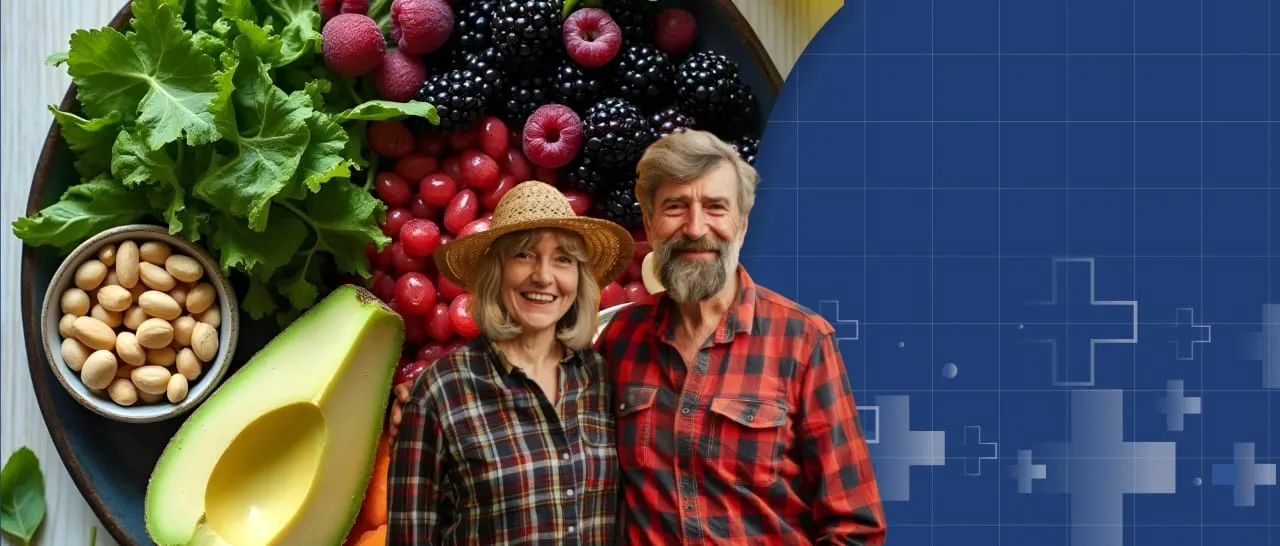10 Healthy Staple American Foods to Control Glucose Spikes and Support a Longer, Healthier Life for Californians with Diabetes
Diabetes, whether type 1 or type 2, affects millions of Americans, including many Californians, with the CDC estimating that over 37 million people in the U.S. live with this chronic condition. For those managing diabetes, controlling blood glucose spikes is critical to preventing complications like heart disease, kidney issues, and nerve damage.
While medication plays a key role, lifestyle changes and healthy food habits can significantly improve blood sugar management, enhance energy levels, and even help reverse type 2 diabetes in some cases.
This blog explores 10 healthy staple American foods to stabilize glucose levels, alongside lifestyle changes that empower Californians to live longer, healthier lives. For personalized guidance, consulting a dietitian or nutritionist is essential, and facilities like Life Saver Urgent Care and Torrance Urgent Care can provide primary care support and specialist referrals to monitor progress.
The Power of Food and Lifestyle in Diabetes Management
For both type 1 and type 2 diabetes, diet is a cornerstone of management. Type 1 diabetes requires insulin and careful carbohydrate monitoring, while type 2 diabetes can often be managed, or even reversed, through weight loss, diet, and exercise. The American Diabetes Association emphasizes that nutrient-dense, low-glycemic foods can prevent blood sugar spikes, improve insulin sensitivity, and reduce the risk of complications. A study from the National Institutes of Health showed that lifestyle changes, including a healthy diet and modest weight loss, can delay type 2 diabetes onset by 34% over four years.
For Californians, adopting these changes not only enhances quality of life but also aligns with the state’s active, health-conscious culture, potentially extending life expectancy.
Beyond diet, lifestyle factors like regular physical activity (150 minutes of moderate exercise weekly), stress management, and 7–8 hours of sleep nightly are critical. These habits improve insulin sensitivity, lower A1C levels, and reduce cardiovascular risks, which are particularly high for those with diabetes. Facilities like Life Saver Urgent Care in California offer primary care support, including blood sugar monitoring and referrals to dietitians, helping patients tailor these changes to their unique needs.
10 Healthy Staple American Foods to Control Glucose Spikes
Here are 10 nutrient-rich, diabetes-friendly American staples that help stabilize blood sugar, are widely available, and fit into diverse meal plans:
Oatmeal: Rich in soluble fiber, oats slow glucose absorption, preventing spikes. Opt for steel-cut or old-fashioned oats and avoid sugary instant varieties. Pair with berries for antioxidants. A bowl of oatmeal with nuts provides sustained energy for busy Californians.
Avocado: A staple in California cuisine, avocados are high in monounsaturated fats, which improve insulin sensitivity and HDL cholesterol. Add salads or spread whole-grain toast for a low-carb breakfast.
Quinoa: This grain, popular in health-conscious California, is high in fiber and protein, with a low glycemic index (GI). Use it in place of white rice in dishes like Southwestern bowls to stabilize blood sugar.
Beans: Black or pinto beans, common in American and Hispanic dishes, are rich in fiber and protein, slowing glucose release. Incorporate into soups or salads for a filling, diabetes-friendly meal.
Greek Yogurt: Plain, unsweetened Greek yogurt is high in protein and probiotics, supporting blood sugar control and gut health. Add fresh fruit or a sprinkle of chia seeds for flavor.
Nuts: Almonds and walnuts, widely available in California, provide healthy fats, fiber, and magnesium. A 1-ounce serving (about ¼ cup) makes a great snack to curb hunger without spiking glucose.
Leafy Greens: Spinach and kale, staples in American salads, are low-carb, nutrient-dense, and rich in vitamins A, C, and K. They have minimal impact on blood sugar and are perfect for smoothies or side dishes.
Salmon: Rich in omega-3 fatty acids, salmon supports heart health, a key concern for diabetics. Grill or bake for a protein-packed meal that won’t spike glucose.
Sweet Potatoes: Unlike white potatoes, sweet potatoes have a lower GI and are rich in fiber and antioxidants. Bake or roast as a side dish for balanced meals.
Berries: Blueberries and strawberries, abundant in California, are low in sugar and high in fiber and antioxidants. Pair with Greek yogurt or eat as a snack to satisfy sweet cravings without glucose spikes.
These foods align with the American Diabetes Association’s plate method: fill half your plate with non-starchy vegetables (e.g., leafy greens), one-quarter with lean protein (e.g., salmon, beans), and one-quarter with quality carbs (e.g., quinoa, sweet potatoes). This approach ensures balanced nutrition and steady blood sugar levels.
Lifestyle Changes to Reverse Type 2 Diabetes and Boost Longevity
While type 1 diabetes requires lifelong insulin, type 2 diabetes can often be managed or reversed through lifestyle changes.
A 2019 study in The Lancet found that sustained weight loss of 5–10% can lead to remission in type 2 diabetes, particularly when combined with a low-calorie, nutrient-dense diet.
Here are key lifestyle changes for Californians:
Physical Activity: Aim for 150 minutes of moderate exercise weekly, such as brisk walking, cycling, or swimming, activities popular in California’s coastal communities. Exercise improves insulin sensitivity and lowers A1C levels.
Weight Management: Losing 5–7% of body weight can significantly reduce diabetes risk. For a 200-pound person, that’s 10–14 pounds. Torrance Urgent Care can connect patients with nutritionists to create sustainable weight loss plans.
Stress Reduction: Chronic stress raises cortisol, which spikes blood sugar levels. Practices like yoga, meditation, or even beach walks in California can lower stress and improve glucose control.
Sleep Hygiene: Poor sleep increases insulin resistance. Aim for 7–8 hours nightly, avoiding screens before bed to align with California’s wellness-focused lifestyle.
Limit Added Sugars: The American Heart Association recommends less than 25 grams (6 teaspoons) of added sugar daily for women and 36 grams (9 teaspoons) for men. Swap sugary drinks for water or herbal teas, a habit that fits California’s health-conscious culture.
These changes, combined with a diet rich in the foods above, can reduce A1C, improve energy, and lower the risk of complications, helping Californians live longer, more vibrant lives.
The Importance of Personalized Care
Every person’s diabetes journey is unique, and what works for one may not suit another. A registered dietitian or nutritionist can create a tailored meal plan that incorporates these staple foods while considering cultural preferences, allergies, and lifestyle. For example, a Californian with type 2 diabetes might enjoy quinoa-based tacos, while someone with type 1 may need precise carb counting for insulin dosing. Consulting a professional ensures a balanced, enjoyable diet that supports an energetic, healthy lifestyle.
Life Saver Urgent Care plays a vital role in this process by offering primary care support, including blood sugar monitoring, A1C testing, and referrals to dietitians or endocrinologists.
They can help track progress, adjust treatment plans, and provide guidance on incorporating these foods and lifestyle changes.
For instance, Torrance Urgent Care in California is well-positioned to support residents with diabetes management, offering convenient access to care and specialist referrals.



